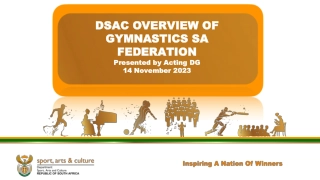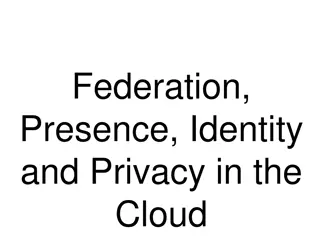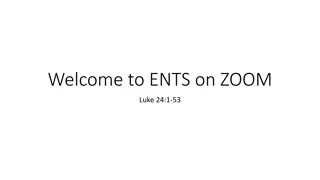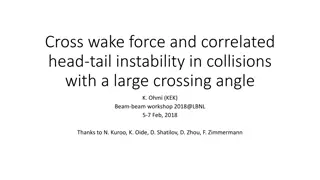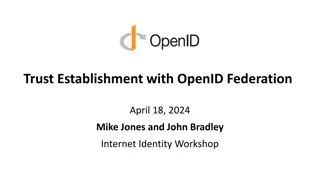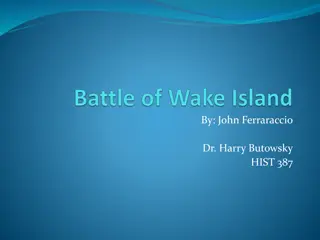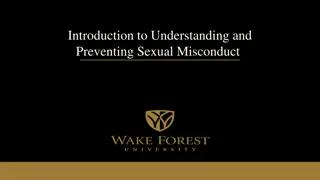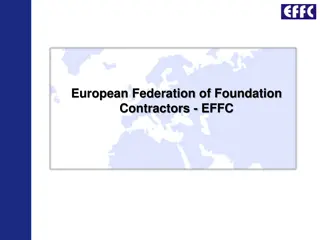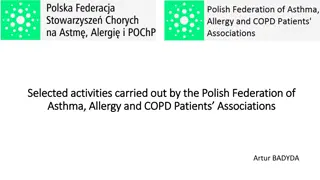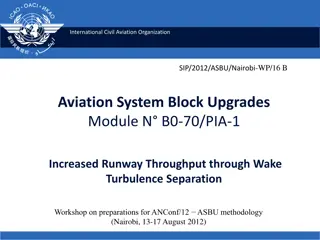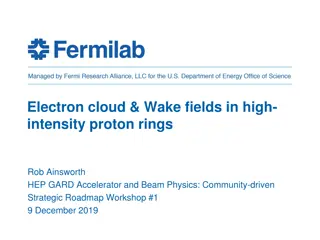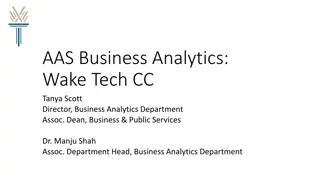Luke A. Wake, Esq. National Federation of Independent Business
Attorney Luke A. Wake from the National Federation of Independent Business presents on November 20, 2013. Mark your calendars for this insightful event.
Download Presentation

Please find below an Image/Link to download the presentation.
The content on the website is provided AS IS for your information and personal use only. It may not be sold, licensed, or shared on other websites without obtaining consent from the author.If you encounter any issues during the download, it is possible that the publisher has removed the file from their server.
You are allowed to download the files provided on this website for personal or commercial use, subject to the condition that they are used lawfully. All files are the property of their respective owners.
The content on the website is provided AS IS for your information and personal use only. It may not be sold, licensed, or shared on other websites without obtaining consent from the author.
E N D
Presentation Transcript
1 Presented by: Luke A. Wake, Esq. National Federation of Independent Business Luke A. Wake December 17, 2015 November 20, 2013
Todays Presenter Luke A. Wake, Esq. Senior Staff Attorney NFIB SBLC 2 #SaveMyLand
In this presentation Overview of the Waters of the United States Rule What is NFIB doing stop EPA / Army Corps? What does the WOTUS Rule mean for affected landowners? How to identify affected lands? Common concerns for small businesses Questions and Answers This webinar is intended to help landowners understand if their property may be affected by the WOTUS Rule. But for those with questions about whether a questionable portion of your land is subject to Clean Water Act regulation, it is highly advisable to seek out professional assessments before any sort of development. 3 #SaveMyLand
The Clean Water Act The Clean Water Act (CWA) was enacted in 1972 to protect America s waters. The Act prohibits the discharge of any pollutants into waters of the United States. Enforced by the EPA and Army Corps of Engineers. Requires federal permits for most activities. 4 #SaveMyLand
What is prohibited? A federal permit is required for: building, grading, landscaping, dredging, draining, or Any other plans to add fill, of any sort, in affected areas. Narrow exemptions / shock-and-awe penalties! 5 #SaveMyLand
A Cautionary Tale Sackett family sought to build dream home. EPA threatened $37,500 per day in penalties! Additionally, EPA required them to spend thousands to restore to natural state. Sacketts believed their property was not subject to CWA jurisdiction EPA disagreed! 6 #SaveMyLand
Overview of WOTUS Rule EPA and Army Corp have issued a new rule defining Waters of the United States The Rule radically expands CWA jurisdiction Creates a presumption of jurisdiction for land with any wet features 7 #SaveMyLand
Selling the WOTUS Rule NYT reports: The Environmental Protection Agency engaged in covert propaganda and violated federal law when it blitzed social media to urge the public to back [the WOTUS Rule] Ruling by the Government Accountability Office. 8 #SaveMyLand
EPAs Doublespeak The Agencies claim the Rule results in only a modest 3% increase in CWA jurisdiction. At the same time they assert the Rule provides new protections for 1/3rdof America s waters. 9 #SaveMyLand
The Truth of the Matter EPA has developed maps identifying at least 8.1 million miles of rivers and streams that will be identified as new waters of the United States. In Kansas alone, the Rule results in a 400% expansion in CWA jurisdiction. 134,000 miles covered now up from 32,000 miles! 1 0 #SaveMyLand
Is this jurisdictional? 11 #SaveMyLand
Is this jurisdictional? 12 #SaveMyLand
Is this jurisdictional? 13 #SaveMyLand
Is this jurisdictional? 14 #SaveMyLand
What is NFIB doing? NFIB opposed the WOTUS Rule at every step! Letters to Office of Management and Budget; Official comments raising legal concerns; Official comments urging Agencies to consider alternatives less harmful to small business; Testified in Congress on EPA s overreach. 1 5 #SaveMyLand
NFIB v. EPA / Army Corps NFIB has filed suit to block the WOTUS Rule! The Agencies ignored small business concerns and failed to comply with Regulatory Flexibility Act. WOTUS Rule contravenes Supreme Court precedent. 1 6 #SaveMyLand
U.S. Supreme Court The Constitution imposes limitations on CWA jurisdiction meaning Agencies cannot assert CWA jurisdiction over every wet spot in America. S.W.A.N.C.C. v. Army Corp of Engineers The Agencies exceed the authority Congress gave if they cannot demonstrate a meaningful connection to interstate waters. Rapanos v. United States 17 #SaveMyLand
Litigation Update: The WOTUS Rule has been temporarily blocked! Federal judge in ND blocked rule in 13 states; Federal Court of Appeals for Sixth Circuit blocked nationwide; Preliminary jurisdictional questions; It may take awhile before there is a final resolution; Expect this will ultimately go to Supreme Court. 18 #SaveMyLand
Is my property affected? Navigable and Interstate Waters Any waterway that can be navigated by a boat is subject to regulation if it eventually flows across state lines or to the sea. For example, a landowner would need a federal permit to add fill, or to dredge, a lake that spills into the Mississippi river. 19 #SaveMyLand
Tributaries Tributaries EPA now claims regulatory authority over all tributaries, which they define as any property over which water occasionally runs so long as the water eventually makes its way into another regulated water. This means that even properties that are dry throughout most of the year will be subject to federal CWA regulation. This also includes many ditches and canals. 20 #SaveMyLand
Tributaries EPA will look for physical signs of occasional water flow such as a high-water mark and banks. Mere indentations in the ground may be jurisdictional if there are visible signs suggestive of water flow including lines in the soil attributable to occasional water flow, or even debris. 21 #SaveMyLand
22 #SaveMyLand
Adjacent Waters Adjacent Waters EPA asserts regulatory authority over all adjacent waters, which would include wet land features in close proximity to jurisdictional waters. This may include marshy areas, ponds, lakes, and similar waters even areas that are only occasionally wet. 23 #SaveMyLand
Adjacent Waters A federal permit is now required to drain, fill, dredge or do anything with a wet portion of your land if it is: (a) within a 100 year flood plain, and; (b) within 1,500 feet of another regulated water or tributary. 24 #SaveMyLand
Other Wet Spots EPA may also assert regulatory authority over other wet portions of your property. Properties within a 100 year flood plain and within 4,000 feet of a regulated waterbody are very likely subject to regulation under the new rules. These areas must be reviewed on a case by case basis. 25 #SaveMyLand
What is not covered? Underground aquifers; Swimming pools; Puddles; and Municipal drainage systems. 26 #SaveMyLand
Farming Exemption There is an exemption for normal farming activities on areas that have been continuously farmed since the 1970s. This allows for plowing, cultivating, minor drainage (e.g. tiling), and harvesting for the production of food and forest products. The exemptiondoes not cover the grading of affected areas of land, the adding of fill materials, or the digging of ditches for the purpose of draining wet areas. 27 #SaveMyLand
What about ponds? There are exemptions for some ponds. Basic maintenance is allowed for stock ponds and ponds used for normal farming purposes. This does not necessarily allow for construction of new ponds, or for any expansion or filling of existing ponds. A permit may be required to dredge a pond used for non-agricultural purposes. 28 #SaveMyLand
What about ditches? May be deemed jurisdictional tributaries if: They flow into other regulated waters, and There are visible signs of water flow. Basic maintenance is generally allowed. Federal permit required to make any changes to covered ditches including for projects intended to widen, deepen, reroute, extend or construct ditches. 29 #SaveMyLand
Army Corps v. Hawkes Co. There is a procedure for requesting an official jurisdictional assessment of your property. What if you disagree with Army Corps assessment? 30 #SaveMyLand
Chesapeake Bay TMDL EPA does not have power to regulate storm water. Nonetheless Chesapeake Bay TMDL purports to regulate local land-use decisions. Asking the Supreme Court to take this case! 31 #SaveMyLand
Get Involved For more information visit www.NFIB.com/waters 32 #SaveMyLand
Legal Guides: 33 #SaveMyLand
Questions? 34 #SaveMyLand
Thank You! Luke A. Wake, Esq. 916-448-9904 / Luke.Wake@nfib.org 35 #SaveMyLand


